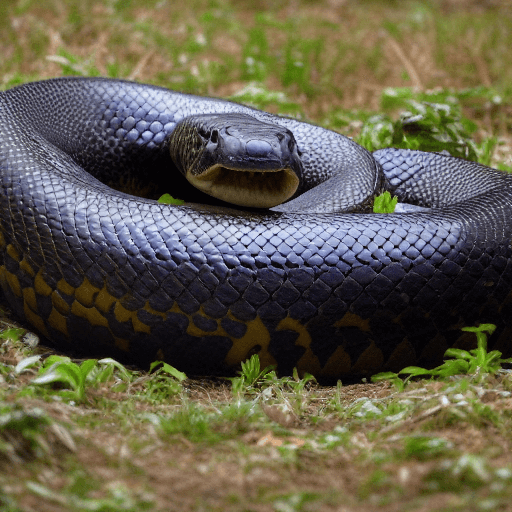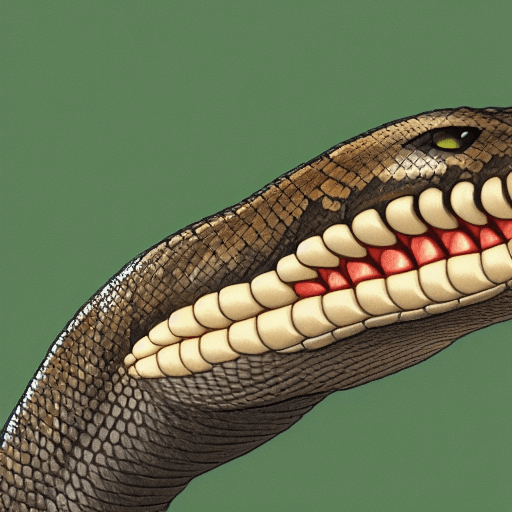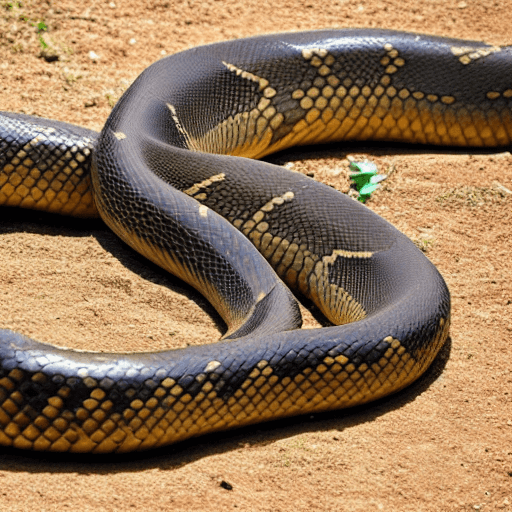Did you know that an anaconda has teeth?
Most people don’t.
That’s because anaconda teeth are hidden in its jaw.
An anaconda uses its teeth to kill its prey.
It bites the prey first and then wraps its body around the prey to squeeze the remaining life out of it.
An anaconda’s teeth can crush bones!

The teeth of anacondas are sharp and pointed in order to grip onto prey.
Explain It To A Child
An anaconda’s teeth are specially adapted to help them eat big prey. Their sharp, curved teeth help them grip their prey tightly, and their powerful jaw muscles help them crush and swallow their food.
They also have backward-facing serrations along the edge of their teeth, which helps them to hold onto prey even tighter.
Anacondas typically kill their prey by constricting them until they can no longer breathe. Once the prey is dead, the anaconda will then swallow it whole.
Anaconda teeth
An anaconda’s teeth are specially adapted for their diet of large prey.
Their sharp, curved teeth allow them to grip their prey tightly, and their powerful jaw muscles help them to crush and swallow their food.
Anacondas have an extra set of teeth in the back of their mouth, which they use to grip the prey from the inside while they swallow it whole.
Although anacondas typically eat fish, reptiles, birds, and mammals, they are not above-eating people if given the chance.
In fact, anacondas have been known to attack and kill humans.
Fortunately, their teeth are not designed for biting through bone, so they usually release their prey before it is too late.

However, an anaconda’s victim often dies from shock or suffocation long before the snake itself is in any danger.
What an anaconda uses its teeth for
The anaconda uses its teeth for a variety of purposes.

Their primary purpose is to grip onto their prey so they can constrict and suffocate it. They also use their teeth to tear apart their food before they swallow it whole.
Anacondas have sharp, needle-like teeth that are spaced far apart.
This allows them to grip onto their prey without leaving too much damage.
They also have long fangs that help to puncture their prey’s skin.
These fangs are venomous, which helps to immobilize their prey and make it easier to kill.
Anacondas use their powerful jaw muscles to crush the bones of their prey before they swallow it whole. Their teeth are essential for hunting and killing their food.
What type of teeth do anacondas have?

There are four types of teeth that anacondas have.
- The first type is called the incisor, which is a sharp, narrow tooth that’s used for slicing meat.
- The second type is the canine, which is a longer and sharper tooth that’s used for puncturing and tearing flesh.
- The third type is the premolar, which is a broader tooth that’s used for crushing and grinding food.
- Finally, the fourth type is the molar, which is the largest and most flat of anaconda’s teeth and is used primarily for chewing.
All of these teeth are razor-sharp and come in handy when anacondas are hunting their prey.
How an anaconda’s teeth are different from other snakes’ teeth
Most snakes have long, sharp teeth that they use for puncturing and holding onto their prey.
However, anacondas have short, blunt teeth that are ideal for crushing.
This is because anacondas primarily eat large mammals, such as pigs and deer.
In order to subdue their prey, they need to be able to deliver a powerful bite. Their teeth are also set back further in their mouths, which allows them to open their jaws wide enough to swallow their prey whole.
As a result of these differences, anacondas have one of the strongest bites of any snake in the world.
Why an anaconda needs such sharp teeth
The anaconda is a large snake found in the tropical regions of South America.
It is known for its massive size, and its sharp teeth are one of its most distinguishing features. But why does this snake need such sharp teeth?
One theory is that the anaconda uses its teeth to puncture the skin of its prey so that it can then drink its blood.
This would provide the anaconda with much-needed nutrients, as well as help to thin their prey’s blood so that it can be more easily ingested.
Another theory is that the anaconda’s sharp teeth help them to grip onto their prey, preventing them from escaping.
Regardless of the reason, there is no doubt that the anaconda’s sharp teeth are a key part of its anatomy.
Thus, an anaconda’s teeth are both an asset and a liability.
On the one hand, they help the snake to kill its prey efficiently. On the other hand, they can also be dangerous to humans who cross their paths.
Article Sources
Jacks of Science sources the most authoritative, trustworthy, and highly recognized institutions for our article research. Learn more about our Editorial Teams process and diligence in verifying the accuracy of every article we publish.
